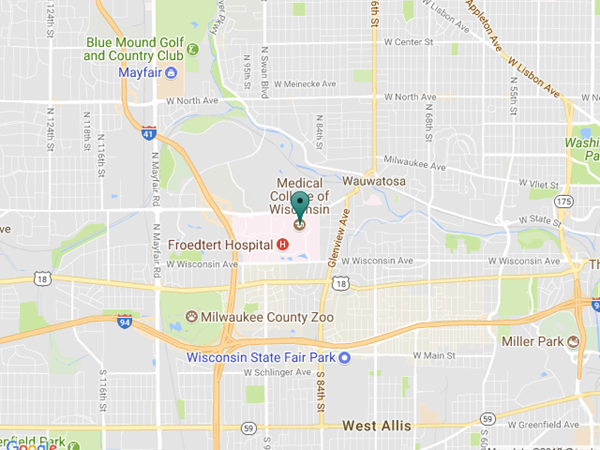Medical College of Wisconsin Fernandino Laboratory
Welcome to the Semantic Cognition Lab
Our team investigates how concepts and language meaning are encoded in the brain. We use functional brain imaging (fMRI and MEG), transcranial magnetic stimulation, and behavioral assessment of neurological patients and healthy participants.
A current focus of our work is the application of fMRI, semantic modeling and machine learning techniques to investigate how word meaning is represented in high-level association areas of the cortex and how these representations relate to sensory-motor and affective neural systems.
The ultimate goal is to elucidate the representational code for conceptual knowledge, leading to a deeper understanding of the language and memory deficits caused by neurological disorders, as well as to advancements in artificial intelligence and brain-machine interface technology.

Fernandino Lab Featured Studies
A Neural Map of Word Meaning
In this study, we asked which areas of the cerebral cortex represent information about the meanings of words. Previous neuroimaging studies had indicated that large portions of the temporal, parietal, and frontal lobes participate in processing language meaning, but it was unknown which regions actually encoded information about individual word meanings.
A distributed network for multimodal experiential representation of concepts
Tong, Binder, Humphries, Mazurchuk, Conant, and Fernandino (2022). The Journal of Neuroscience.
The Stuff of Thought is the Stuff of Experience
In this study, we addressed the question of how the contents of our thoughts – concepts, ideas, beliefs – are related to the physical world that we experience through our senses.
Decoding the information structure underlying the neural representation of concepts
Fernandino, Tong, Conant, Humphries, and Binder (2022). PNAS.
Fernandino Lab Recent Publications & News
Publications
The primacy of experience in language processing: Semantic priming is driven primarily by experiential similarity
Fernandino & Conant (2024). Neuropsychologia.
The neural representation of body part concepts
Mazurchuk, Fernandino, Tong, Conant, & Binder (2024). Cerebral Cortex.
Concept Representation: Encyclopedia of the Human Brain, 2nd edition, Elsevier
Fernandino & Binder (2024).
How does the "default mode" network contribute to semantic cognition?
Fernandino & Binder (2024). Brain and Language.
Stimulus repetition and sample size considerations in item-level representational similarity analysis
Mazurchuk, Conant, Tong, Binder, and Fernandino (2023). Language, Cognition and Neuroscience.
News
Leonardo Fernandino, PhD, receives $2M grant to study how language meaning is encoded in brain activity using functional neuroimaging
MCW News | May 7, 2024
Exploring how the mind processes language, objects and sensory information
The Morning Show, WPR | March 17, 2022
Imaging Brain Activity in Real Time
Organization for Human Brain Mapping | February 17, 2017
Brain mapping: Getting it right
HuffPost | July 21, 2016
Fernandino Lab Members

Leonardo Fernandino, PhD
Associate Professor of Neurology, Biophysics, and Biomedical Engineering; Interim Vice Chair, Faculty Affairs and Development, Department of Neurology

Sidney Schoenrock, MA
Research Program Manager

Jiaqing (Tony) Tong, PhD
Postdoctoral Researcher

Joe Heffernan, MS
Engineer III
Fernandino Lab Collaborators
Andrew J. Anderson, PhD
Assistant Professor of Neurology, Neurosurgery, and Biomedical Engineering
Jeffrey R. Binder, MD
Professor of Neurology and Biophysics
William Gross, MD, PhD
Associate Professor of Anesthesiology and Biophysics
Hernan G. Rey, PhD
Assistant Professor of Neurosurgery and Biomedical Engineering
Priyanka Shah-Basak, PhD
Assistant Professor of Neurology and Biomedical Engineering
Contact the Fernandino Lab
Leo Fernandino, PhD
Director, Semantic Cognition Lab
lfernandino@mcw.edu
Curriculum Vitae & Complete Publication List
The Fernandino Lab is supported by the National Institute on Deafness and Other Communication Disorders.
Medical College of Wisconsin
Department of Neurology
8701 Watertown Plank Rd.
Milwaukee, WI 53226
We are affiliated with the Department of Neurology, the Joint Department of Biomedical Engineering, the Neuroscience Research Center, and the doctoral programs in Neuroscience and Biophysics.




